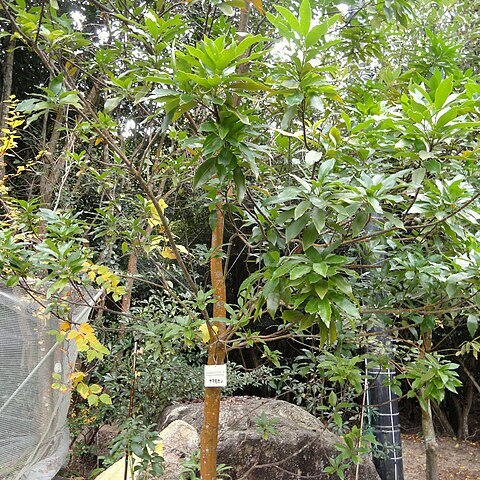Trees, rarely shrubs. Leaves alternate, rarely ± opposite or ± whorled, petiolate or subsessile, simple, margin entire or serrate. Inflorescence axillary, ramiflorous, rarely subterminal, a raceme of flower pairs, many-flowered. Flowers bisexual; bracts of flowers and flower pairs small, ovate-acuminate to subulate, rarely foliaceous, caducous, rarely persistent. Flower pairs sessile (“pedicels free”) or with a basal common peduncle (“pedicels connate”). Perianth tube straight, slender, limb clavate to ± globose, segments free and revolute at anthesis. Stamens subsessile, attached slightly below limb; anthers oblong; connective apiculate. Pollen grains triporate, exine scabrate-granulate. Hypogynous glands 4, free or connate into a ring or cup. Ovary sessile; ovules 2, anatropous, inserted at base of locule or laterally on wall. Style slender; stigma terminal, punctiform. Fruit usually indehiscent, although sometimes splitting along ventral suture; pericarp mostly thick and leathery. Seeds 1 or 2, ± globose to hemispheric; testa thin; cotyledons fleshy, apically rugulose.
Trees or shrubs. Branchlets terete. Leaves simple, spiral (rarely opposite); margin entire or variously toothed. Conflorescence raceme-like, terminal or subterminal, axillary, ramiflorous or rarely cauliflorous. Involucral and floral bracts small to minute, rarely persisting. Flowers actinomorphic, bisexual or andromonoecious. Receptacle straight. Perianth straight; tube slender; limb slightly expanded; tepals separate and revolute at anthesis. Hypogynous glands 4, free or fused into a cup. Stamens 4, adnate at limb base; filaments short. Ovary sessile, glabrous or tomentose; style straight; pollen presenter fusiform. Fruit drupe-like, indehiscent or splitting irregularly. Seed 1, rarely 2, globose or ovoid.

